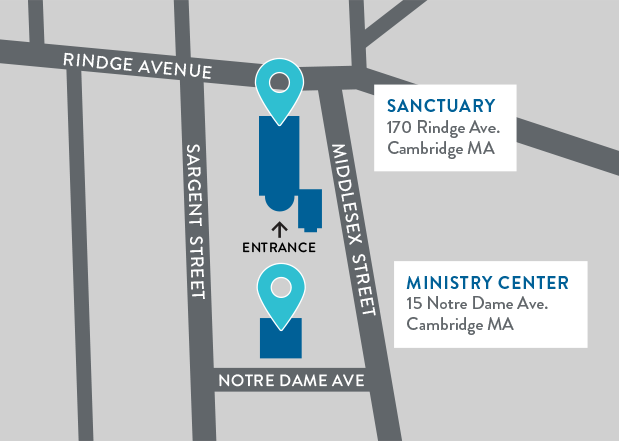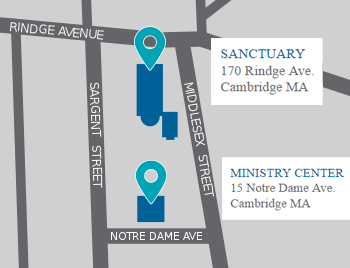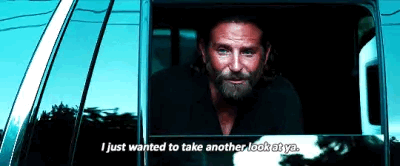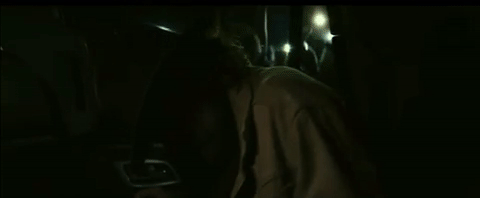Jillie Wowk-Kennedy, Reservoir Member, interviews Liza F. Carter, whose work is currently on display in the Reservoir Dome Gallery. Liza is a Massachusetts-based watercolor painter and photographer. See her art on Sundays before/during/after our Sunday services.
It took a little bit to get this interview off the ground. Poor Liza had to call me back 3 times while I tried to figure out how to record a phone call and in the end I just gave up and stuck her on speaker while I typed. From our conversation I learned a lot of valuable lessons about Art and Stewardship and How to Conduct a Phone Interview. Thanks, Liza, for sticking it out with this internewbie!
So, what can we expect to see in the Dome?
A lot of the pieces are up on my website. What’s different is they’re printed on large canvases, 2½ to 3 feet in diameter. They’re being shown on a completely different scale, so that’s sort of fun.
I know it’s sacrilege, like picking a favorite child, but I’ll ask anyway: Do you have a favorite piece? One that you’re most proud of or was the most fun to create?
The Pussy Willow ones. “Pussy Willow 3,” that’s my current favorite.
I pull the Pussy Willows up on her website; they’re a three-part watercolor series featured right on the homepage. “Pussy Willow 3” is smaller than the other two and the background is shot through with pure cobalt blue. Its perspective is tighter than the others, inviting your eyes to linger in the crux of the willow branch.
The thing about watercolors is, you’re always dancing between being in control and completely out of control. And you have to enjoy that process or else you switch to oils or acrylics. You never know what you’re going to get until you got it. With “Pussy Willow 3” I was happy with the background and the definition of the pussy willows themselves. The way I paint tends to be realistic but not photorealistic. With paintings, I like to know what I’m looking at, but if I’m looking at a painting I’m looking at something that’s more than a realistic depiction of something.
The photos that are in the show are more fine art interpretive photographs. They’re not documentary, but they’re also not extreme angles and filters and tweaking and post processing work. It’s just like! I don’t want to be spending all my time on the computer; it doesn’t speak to me. So when I want to be creative, I do it in the watercolors.
How did you first develop your appreciation for watercolors?
Color. I do a lot of knitting and my knitting is all about blending and doing dramatic things with the way colors work together and I was walking down a hallway in the local art center in Concord and there were some watercolor paintings on the walls and they had a lot of different pigments blended up to do their own particular magic and I thought WOAH! That’s what I’ve been trying to do with knitting. The artist was offering a class at the center, so I took her class and fell in love with the process. It was the play of the color and water.
How long have you been painting?
About 10 years.
What’s a lesson watercoloring has taught you?
You’re not in control. That’s sort of the first thing. And the other is you have to play with what you get.
How did you first develop your appreciation for photography?
I think it was being able to capture the “defining moment” where in the midst of everything moving, you capture a still that encapsulates everything. It’s something that, in the age of so-much-video, doesn’t really happen. It’s much easier to capture a scene with a video because you get the whole range. You see the movement and the relationship develop, whereas if you’re capturing that in a still… that’s a very different skillset.
Back when I started, video wasn’t really a thing, so I did enjoy trying to capture something that… like with the photos featured in the show, it’s more an emotion. It’s all nature images. When exploring a subject to share, like with my Mongolia pictures, I want to use photography. I didn’t want that to go through my interpretive lens.
How long have you been shooting film?
Since high school. That was really my first major art area.
What’s a lesson photography has taught you?
The importance of staying open to capturing that definitive moment that oftentimes you have a millisecond to react because the person or the light is going to change or the animal is going to move and you have to be open with those art-aware eyes. I never do studio or street photography; nature photography requires quick reflexes.
If you could direct your viewers’ eyes to one thing, what would it be?
I think that I would say take time to actually enter the picture. I think that one of the things that happens is that people look at things very cursorily and if you take time with any piece of artwork you will see a lot more than what you initially got. Stay with the picture; try to enter it.
What is one artist tool you can’t live without?
My eyeballs.
How would you describe your process?
It all starts with a visual — something that I’m excited by — and that pretty much drives everything else. In order to stick with something long enough you have to have a heart connection to it and you have to keep touching base with that initial thing that spoke to you. It’s easy to get waylaid in the technicalities; they’re important, but they’re not the only thing. I find that with painting.
I was originally trained as a scientist and I believe in the whole right brain/left brain thing, so I need to start the day in the right side of the brain. If I started the day in textbooks or going over notes, I would have a very hard time switching gears. I have to be very conscious of how I begin.
A drawing teacher once gave me this great tip: the left side is concerned with logistics. So, if you have a time limit, the left side of your brain will be like okay, what time is it? What time is it now? What time is it now? Set an alarm, so your left brain says okay, that’s set; I can butt out for a while. When I’m in the creative place where I want to be I do everything possible to support staying in there. Because it’s very easy to pop out!
Your academic background is in environmental science. What would you say the role of an environmental scientist is in our society?
Education. I think if people truly understood the implications of the decisions being made they would make very different decisions. There are… a lot of heads in the sand. It’s not going to affect me — it’s deeply scary. Things that were predicted when I was in grad school in the 80s are all coming to pass and now they’re so much more difficult to ease up or mediate than if they had just been fixed then. Toxic chemicals in our air and water and food,…it’s really scary!
I think it’s education and trying to build connection! People are not going to protect things they don’t love. However they experience it, through going out in nature themselves or through art… Nature deficit in this country is a very real issue and out of that spins lack of concern and decisions that end up trashing it.
What is the role of an artist?
Well, I can really only answer for myself. For me, I want to help build connections between people and the environment. And in my case, that’s by presenting the beauty of it and hoping that people will be pulled into that. That goes back to “people can’t protect what they don’t love.” It’s trying to make things more visible and it’s partially why I was experimenting with this scale.
What is a rule you love to break?
Most of them. I like to see between the cracks. The Mongolia book and the book on grass fed beef is falling in between categories of things. No one knew what to do with these books! Is it a textbook? Is it a guide book, a coffee table book, a photography book? And the answer could be yes or no to any of those things and, like many things that are new, people don’t know what to do with them. It’s filling those things in between the cracks…
She trails off. Liza had spent a full year living in Mongolia, documenting the daily lives of a community of nomadic herders. She ended up with a treasure trove of startling, vibrant images — at once sprawling and intimate — and nowhere to put them. Her publisher’s inability to commit finally drove Liza to self-publish a book which has gone on to receive seven awards. She’s facing the same short-sightedness with her current project, Hamburgers Don’t Grow on Trees, a children’s book about the American meat industry.
What’s your dream project? Like, no time constraints, unlimited funds, the world is your oyster! What would you do?
Ooh, um… A continuation of the photography book I’m trying to get published now, Hamburgers Don’t Grow on Trees. And my goal with that is, to cut to the real chase, to eliminate factory farms. I personally am an omnivore, I eat meat, but I only eat meat that is ethically grown and that’s a very small percentage of the meat in the world. I mean, everyone has a rough time at the end of life, but the quality of an animal’s entire life is the important piece to think about and as big corporations have taken over from family farms, it’s gotten exponentially worse. I mean, anyone who actually witnesses it no longer participates in it; it’s that horrible. There’s a lot of information on the scary things that happen and my book is showing kids a way that honors the animal and the farmer and takes care of the environment in the process. I’m sort of in the middle of it; I’m trying to get it out into the world because publishers are scared of it. It’s taking on a big topic, particularly for kids. And you know, it’s not a typical… what I have to do is figure out an end run around the gatekeepers. So that’s sort of my challenge right now.
How do you handle that frustration?
On a day-to-day level, it’s mainly hanging out with my personal menagerie and spending time out in nature. That’s hugely important for me. And there are people who are working on all these topics… I go back and forth between being optimistic that something can happen, but then I can also go down the rabbit hole, seeing all the stupid stuff that’s happening with our current administration, and get really bummed out.
My first job was working for the NRC in New York City and Reagan had just come in and he had hired a Secretary of Interior who was totally anti-environmental. This was early days of there even being an environmental case law and this guy was trying to undermine everything and just take us back to, like, to square zero. I remember I was talking to one of the lawyers and I asked him how he felt about going back to fight over square one and he said, ‘I love to win, but what I really love is the process and I’m okay with going back and fighting more’. And I thought…I am not okay with that. I love the end result, not the fight. So that’s when I started exploring other— that’s why I’m working as an artist, trying to shift how people view things. And I think many people have experienced seeing an image— most recently that young child who was separated from her parents at the border? That picture changed things. And again, that boy washed up on the shore? That also changed things. It’s those things that keeps me going, saying yeah, art and photography can make a difference.
Is there a question I haven’t asked that you wish I did?
Ha! Uh…It’s more of a rant. When you work as an artist, you very rarely get outside validation for anything that you do. When you’re working for an organization, you have a title, a bonus, you get raises and reviews, things you can look to as landmarks that you’re improving and that is not the life of the artist. It has to be much more internally satisfying. And it is! And it still can be sometimes challenging.
By now Liza has begun a two-week safari in Africa, radio-collaring giraffes and doubtlessly marinating in the thrill of walking the dirt of a different continent. Then she’ll make a quick pit stop in Geneva, where her daughter is finishing up a Masters degree. Liza also has a son, a dog, a parrot, eight chickens, and four rescue kittens. Her son is a musician. His band, Windborne, has recently taken off after one of their videos went viral (look up “Song of the Lower Classes at Trump Tower” on YouTube). Now, thanks to the internet, they work as full-time traveling musicians.
I’m using my art as a kind of activism, my son is doing the same thing through singing, and my daughter is getting a Masters in human rights law, so we’re all activists in certain ways.
















